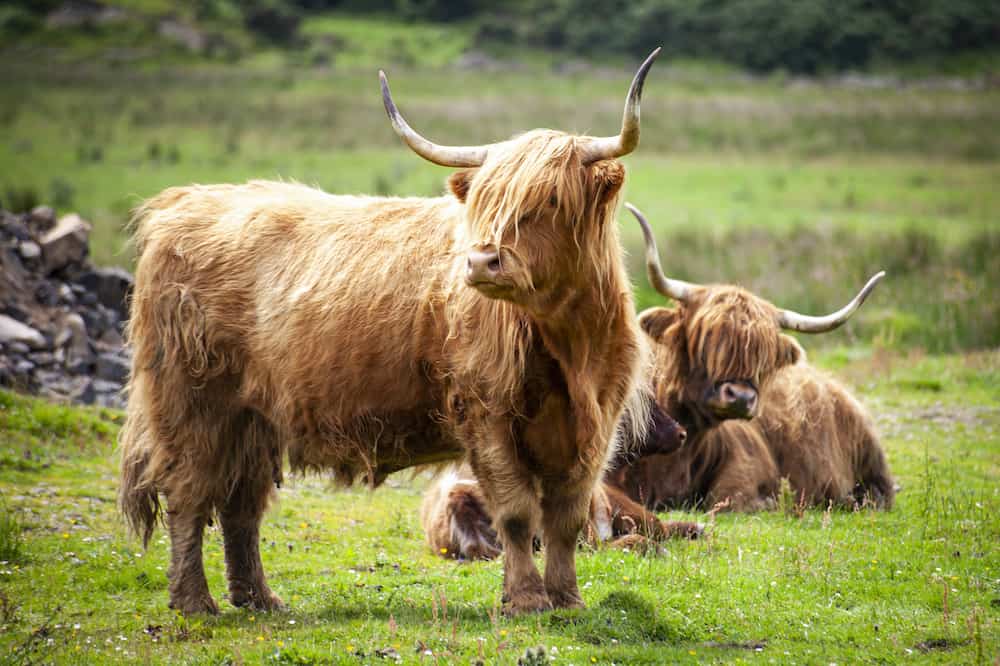

But the evidence of them being used as cheese-producing machines is also found in Cumberland.įortunately or unfortunately they are hornless. Like the belted galloway cattle their pregnancy remains complication-free and they start nursing their calves right away.Īll Scottish cattle are kept for meat so they are not different.
#Scotch highland cow how to
Galloway cattle are docile so they know how to protect their calves and herd in the time of danger. They originally had horns but the intentional crossbreeding brought forward this new polled generation and livestock keepers are happy with that. They are among the few Scottish cattle that are more frequently mentioned in detail in the books of history.

Like most Scottish cattle, their thick hairy coat makes the livestock farmers go crazy. These cattle are native to Scotland but their distribution to the other parts of the world makes them readily available in other countries as well mainly Canada, Australia, and the US. Here we are presenting another world’s oldest Scottish breed known as the “Galloway cattle”. Do farmers take pride in keeping them as they are frequently asked where did they get this alien from?Īpart from the provided information, they are said to be well mannered and easier to keep as they are naturally adapted to living on poor cattle feed.

You may wonder why? Well, because of their unusual appearance. It might surprise you but belts are also kept as an ornament.

They are pretty much similar to the other Scottish breeds but the appearance of the white belt makes them stand out even in the bright daylight. These dual-purpose cattle can also be kept to fulfill the milk requirement but the well-marbled, leaner, and flavorful meat is the reason they are most preferred for. Like all other Scottish breeds, these cattle are kept for meat mainly. Read more about black and white cow breeds as a guide. The shade of black can get darker or duller but it will still be black enough to be called black. They are recorded in the books of history as ” Belted Galloway Cattle” but they are popular among their keepers as “Belties” and “Oreo” as their color pattern looks a little like Oreo cookies.īelted Galloway cattle are mostly found in black colors.
#Scotch highland cow full
The beef driven from the belted galloway cattle is not just full of flavor but is also low in saturated fat. Having two calves at the same time is not rare for this particular breed and they can give birth every year. They are super fertile and are less likely to face any complications during their pregnancy and at the time of delivery. The appearance of a white belt is considered an outcome of cross-breeding. The prominent white belt makes them different from the just “Galloway Cattle”. It was recognized as a separate breed back in 1921 but its exact origin is still not discovered yet. But first, have a look at their common breeds.īelted Galloway, a traditional Scottish breed, is a low-maintenance cattle, indigenous to the Galloway region of South Western Scotland. Let’s discuss the breeds of Scottish cattle in detail. The other difference you may find interesting is, the group of highland cattle is not called herd it is rather referred to as folds. All the breeds are slightly different and the difference in their height and their size is due to the severe climate conditions and limited rations. Their milk production, high in butterfat, is around two gallons. They have smaller teats and they can not produce as much milk as production milk cows can. They got this name because of their country of origin, Scotland. Scottish cattle breeds (recklessly called highland cows, Scottish cattle, Scottish highland cattle, West highland cattle, Long Haired highland cattle, and Long-haired Scottish cattle) are known for their attractive thick shaggy hair and leaner beef. This site also participates in other affiliate programs and is compensated for referring traffic and business to them. Farming Base ( ) is a participant in the Amazon Services LLC Associates Program, an affiliate advertising program designed to provide a means for sites to earn advertising fees by advertising and linking to.


 0 kommentar(er)
0 kommentar(er)
